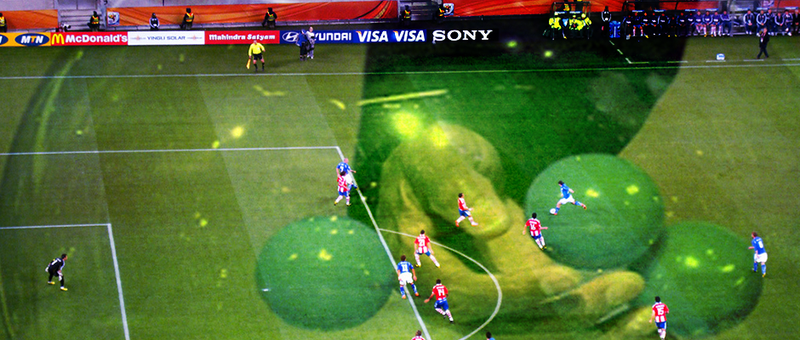How to get rid of the ping pong balls: An alternative to the World Cup Draw

For an organization that is against match fixing of matches, it is ironic that FIFA uses ping pong balls to determine the placement of teams into eight groups for the worlds most important sporting event. It just shows a general lack of common sense and lack of will. There’s just too much on the line to run a lottery, especially when an easy and fair approach is so obvious.
Being a fan of the USMNT, it would be easy for me to sound off on my they were screwed by the aforementioned ping pong balls. But I don’t want to this to sound like sour grapes. So I am going to use other teams scenarios as justification for the stupidity of the draw:
- Both Spain and the Netherlands (champion and runner-up four years ago) didn’t lose a match in their final qualifying groups. Their reward? They drew each other in the same group with a tough Chile team.
- France got off easy. With the way France “represented” themselves in the last World Cup, and how they needed a desperate win down two goals to even qualify (to their credit they did), they deserved a tougher group and NOT a free pass into the top 16.
- Ghana deserved better. Being one of the top teams in qualifying from Africa and one of the better historic African performers at the World Cup, they didn’t deserve their draw. Just look at their group. They got two top 5 world-ranked European teams and the CONCACAF top qualifier. That doesn’t seem right by any standard, especially when Cameroon, the lowest ranked African qualifier drew an easier (but not easy) group.
- Of note, the most difficult group has an average ranking of (as determined by the FIFA rankings): 11.25. The lowest ranking is: 28.25. That’s 17 spots. A serious disparity.
To sum up, the draw doesn’t take into account how a team got there, but its based simply on which confederation they belong to. Fortunately there is an easy solution I will now over explain.
Seed the teams 1-32 based on the FIFA World Cup Rankings, while ensuring groups are geographically diverse.
The criteria explained:
1. The FIFA World Cup Rankings: While no ranking system is perfect, this one is pretty good. It takes into account the qualification process, confederation tournaments, and friendlies. They are mostly accepted by world football too, that helps. Side note: If World Cup seeding was partially determined by the results of friendly matches, it would help friendlies to become more important. An unintended bonus!
2. Geographic Diversity: Continue the tradition of having no other teams from your confederation in your group, unless you are from Europe, then there should be no more than two. This is an important element of it being the World Cup.
With criteria in place, let’s just rank the teams, starting with #1 (Spain) through number 8 (the Swiss) and slot them in groups A to H. Then in the second round take the next group and slot them in H to A. So the #9 team (Netherlands) is placed with the Swiss. Then we go A to H, then H to A. So the top team and the bottom team are placed into the same group.
This is not rocket science.
The only catch is ensuring geographic diversity. The first conflict came with placing #20 Mexico, who would have been placed with the USA (the irony!), so I moved Mexico down, and filled in the open slot with the next ranked team (Bosnia-Herzegovina). Surprisingly, this only happened three times (as noted by the asterisks).
Here’s how the final results would look:
A: Spain (1), Croatia (16), Côte d’Ivoire (17), Australia (58) B: Germany (2), Chile (15), France (19), South Korea (54) C: Argentina (3), USA (14), Bosnia-Herzegovina* (21), Cameroon (51) D: Colombia (4), England (13), Mexico* (20), Japan (48) E: Portugal (5), Greece (12), Ecuador** (23), Iran (45) F: Uruguay (6), Belgium (11), Russia** (22), Nigeria (36)***: G: Italy (7), Brazil (10), Ghana (24), Honduras (41)*** H: Switzerland (8), Netherlands (9), Algeria (26), Costa Rica (31)
These groups are fair and balanced leading to a great competition! Proof is that the average rankings of the groups falls between 18.75 and 23. That’s only five spots. So no group can be considered easy, and no group can claim to be that much harder than the others.
Remember that with the current draw the spread was 11.25-28.25 or 17 spots and it hit teams randomly!! Giving the 11th ranked Belgians the easiest group and the 2nd ranked Germans the hardest. My seeding gave Spain, Germany, and Argentina slightly easier groups with the #8 Swiss getting a slightly harder group, but this is the way it should be.
To conclude, FIFA has a contact form that asks for ‘Feedback on National teams’ Fixtures and Results’. Let’s use it, send them the link to this post.
I’d enjoy hearing your thoughts below, but I leave you with this method for destroying the ping pong balls once and for all: